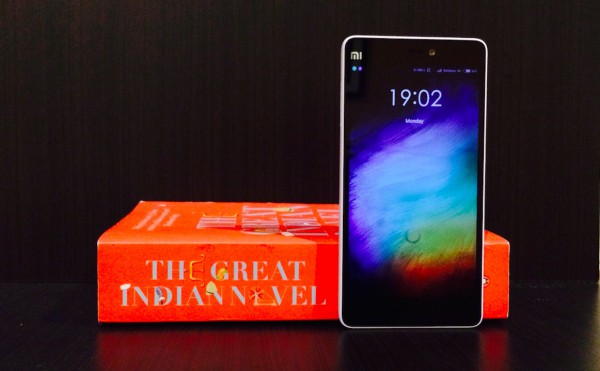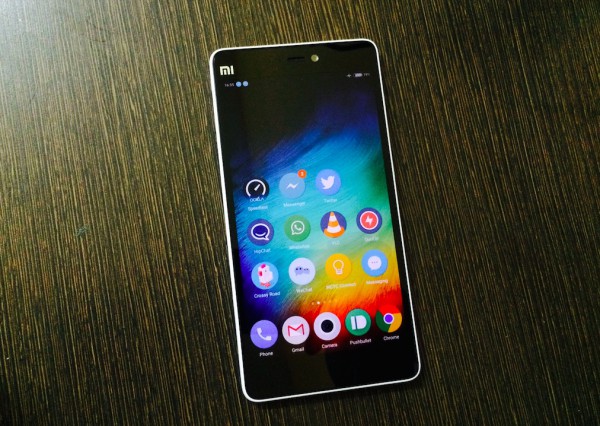I bought a $200 Android 'flagship' smartphone and it changed everything

A few weeks ago my one-and-a-half-year-old Nexus 5 started to misbehave. Its power button wasn't holding up well, forcing the phone to switch off a dozen times, while also making it a chore to turn the phone back on again. I realized the phone was on its last leg. I also have an iPhone 5s, but I mostly use it to listen to podcasts, take phone calls, and take photos. Suffice to say I'm an Android guy. With OnePlus announcing its plan to release the successor of its One flagship in Q3 later this year, and LG reportedly working on the successor to Nexus 5, I decided to purchase a cheap phone running Google’s software to keep my boat floating until these much-anticipated smartphones begin to trickle up on the market. This led me to purchase the recently launched $200 Mi 4i smartphone from Chinese conglomerate Xiaomi. After using it for a couple of weeks, I don't think I want to upgrade to a new phone this year.
The smartphone market has seen many new forces arrive in the last couple of years. These new players have changed the landscape entirely, pushing new phones with top-notch capabilities at an increasingly competitive price point. We now have plenty of options in both the low and mid-tier categories. The dirt-cheap $100 Moto E is a decent entry-level smartphone, and the $180 Moto G entices users looking for a more efficient phone. The Lenovo A7000 offers 4G LTE capability for less than $150, and $100 Android One smartphones from Micromax, Karbonn Mobiles, and Lava offer the up-to-date software and reasonably good specs. But I wanted a phone that offers a high-end processor and top-of-the-line hardware modules; Xiaomi was offering me just that.
The Chinese technology giant, which didn't even exist until late 2011 (Google was prepping to release Android 4.0 ICS update then, to give you some more context), has earned a name for itself for offering high-end phones at low prices. And it's not an unknown company, either. Xiaomi is today the third-largest smartphone manufacturer in the world. For those unaware, the company's last year flagship Mi 4 which is available for purchase at just $300, offers same specs as you will find in $600 Galaxy S5 (sans contract), and $630 Xperia Z3.

But I didn't have a lot of expectations for this phone. To my surprise, however, it has turned out to be a pretty decent device. Shelled inside a well-built, and attractive looking polycarbonate unibody chassis with non-removable back, the phone is only 7.8mm thick and light too -- weighing just 130 grams. It feels reasonably comfortable in the hand. Its FHD (1920 x 1080 pixels) display is a visual delight. It is sharp, bright, and colors produced by it are vibrant and rich. Compared to the Nexus 5, I like the 4i's display much better (even though both offer same resolution screens). The company says that the phone's display is thinner than usual -- which it has managed to achieve utilizing the latest one glass solution (OGS). It says that it has managed to reduce the unwanted air gap between the LCD panel and the touch sensor (as you see in the iPad Air 2). It’s easily noticeable when you operate the device.
The other thing which impressed me about this phone is its battery life. Thanks to the 3,120 mAh battery, the phone does't usually die on me until late evening, clocking up to 18-20 hours on a single charge with about 7 hours screen-on time. That's an insane upgrade from my Nexus 5, which calls it a day after only 2 to 3 hours of moderate usage. Even when I was away from my place -- on a roaming network -- with two 3G enabled SIM card on crappy networks, the phone didn't sip much battery. The dual-SIM capable 4i supports 4G LTE network as well, I couldn't test it myself, but a few friends tell me that the phone fares decently well in the still-largely-unavailable network in India.
If you have been following the press, you would know that many people -- including Apple's design chief Jony Ive -- have criticized Xiaomi for copying several elements from Apple's mobile operating system. They didn't do it for no reason. The phone's Android 5.0-powered MIUI skin borrows plenty of elements from iOS. From icons to placing all the app shortcuts on the homescreen with no app drawer, to the familiarity you are bestowed with while turning off the device, the company definitely is a fan of Cupertino-based company’s mobile operating system. All the ethics aside, Xiaomi has managed to pull off the aesthetics rather succinctly.

On the software side, the company ships its device with a number of homegrown apps. It has its own cloud storage offering in Mi Cloud (which offers 5 gigs of space for free), as well its own email client, browser, messaging app, music app, and security software. But I wouldn't categorize them as useless (or bloatware) as they are all adding some interesting features to the phone. For instance, there is an app called Themes which lets users change the icons and interface of the phone. You can neither remove these apps nor disable them, however. The phone, much like other Android devices, supports third-party launchers and allows you to change the theme and icons the way you see fit. Seeing productivity suite WPS Office, messenger client Line, and shopping portal Flipkart pre-installed on my retail unit wasn't exactly enthralling, though.
These apps, unfortunately, take a toll on memory. The retail unit I bought was already using 1GB RAM out of the 2GB RAM the phone comes with. After installing a couple of other apps, the phone never had more than 700-800MB of free memory available. This also takes a hit on the performance. The phone ships with a 2nd-generation 64-bit capable Snapdragon 615 SoC clocked at 1.7GHz. You would expect the device to run smoothly with this sort of hardware config, but the "affordable flagship" isn't as performance efficient as the Nexus 5. I found the phone slow and lagging. It sometimes got hot to an alarming level too. But interestingly, the company pushed an update just a day after which offers a significant improvement to the device. The update didn't make the phone butter smooth or snappier than Google's two-year old flagship smartphone, but it did make the phone a lot less annoying, and a lot more usable.

As long as I was checking emails, browsing a couple of web pages, roaming around Facebook and Twitter, and chatting to friends using Hangouts and WhatsApp, the phone worked just fine. But playing high-end games such as everyone's favorite (apparently) Asphalt 8 at even graphics toned down to medium, the title would become noticeably slow at times. Moreover, sometimes I found the device getting a bit warmer and start crawling under normal usage as well. A restart always sorts that thing out, though.
This brings me to the camera part. The phone sports a 13-megapixel rear-camera, and a 5-megapixel sensor placed upfront. The 5-megapixel front-facing camera takes impressive pictures with enough detail. The photos clicked using it are a lot better than what my iPhone 5s can offer. The rear-camera which has a 5-element lens configuration with an f/2.0 aperture and two-tone flash also takes nice shots. Check out the images I took with it here. The company says that the LED flash automatically assess the temperature of surrounding to adjust lighting, and the claim seems accurate.
Apart from little stuttering performance, the only thing which I didn’t like about this phone was the non-expandable 16GB storage. The company is giving users about 11GB usable space out-of-the-box, which your music files, podcasts, games, and other apps data could eat up in within a week or two. Sadly, there is no Mi 4i variant with more storage. The speaker, which is placed on the back, isn't exactly great either. But it's good enough.
All in all, I am quite happy with this phone so far. Sure it's not as fast as the Nexus 5 when it comes to performance, and its primary camera doesn't take as good pictures as my iPhone 5s, but it does those things reasonably well. The display and battery life of the phone are capable enough to give other flagship smartphones a run for the money. And not to forget it costs only $200. Xiaomi calling the phone "flagship" is a bit misleading, but it definitely qualifies as a high-end Android smartphone. It's reliable, premium-looking, and gets the job done.